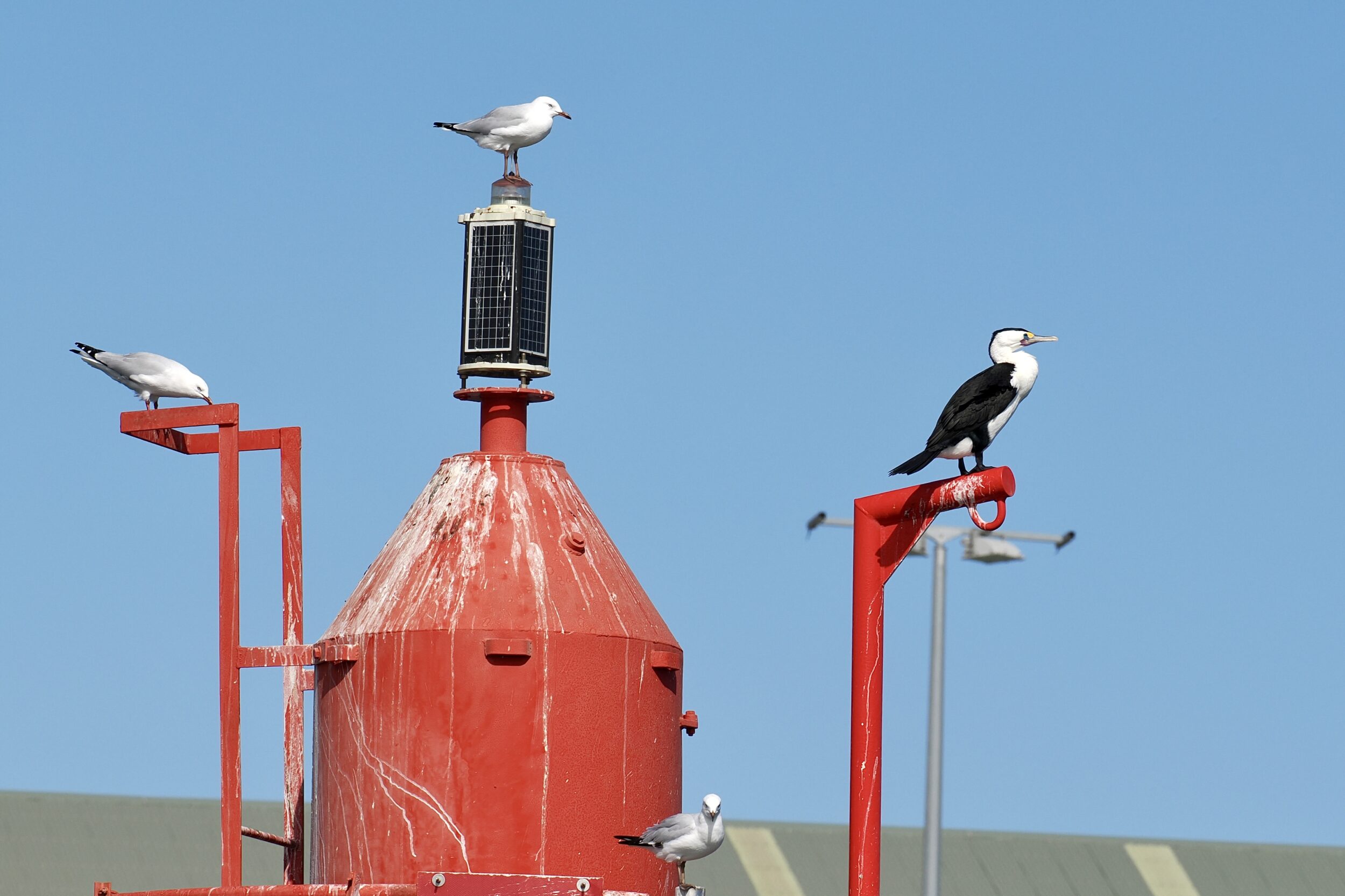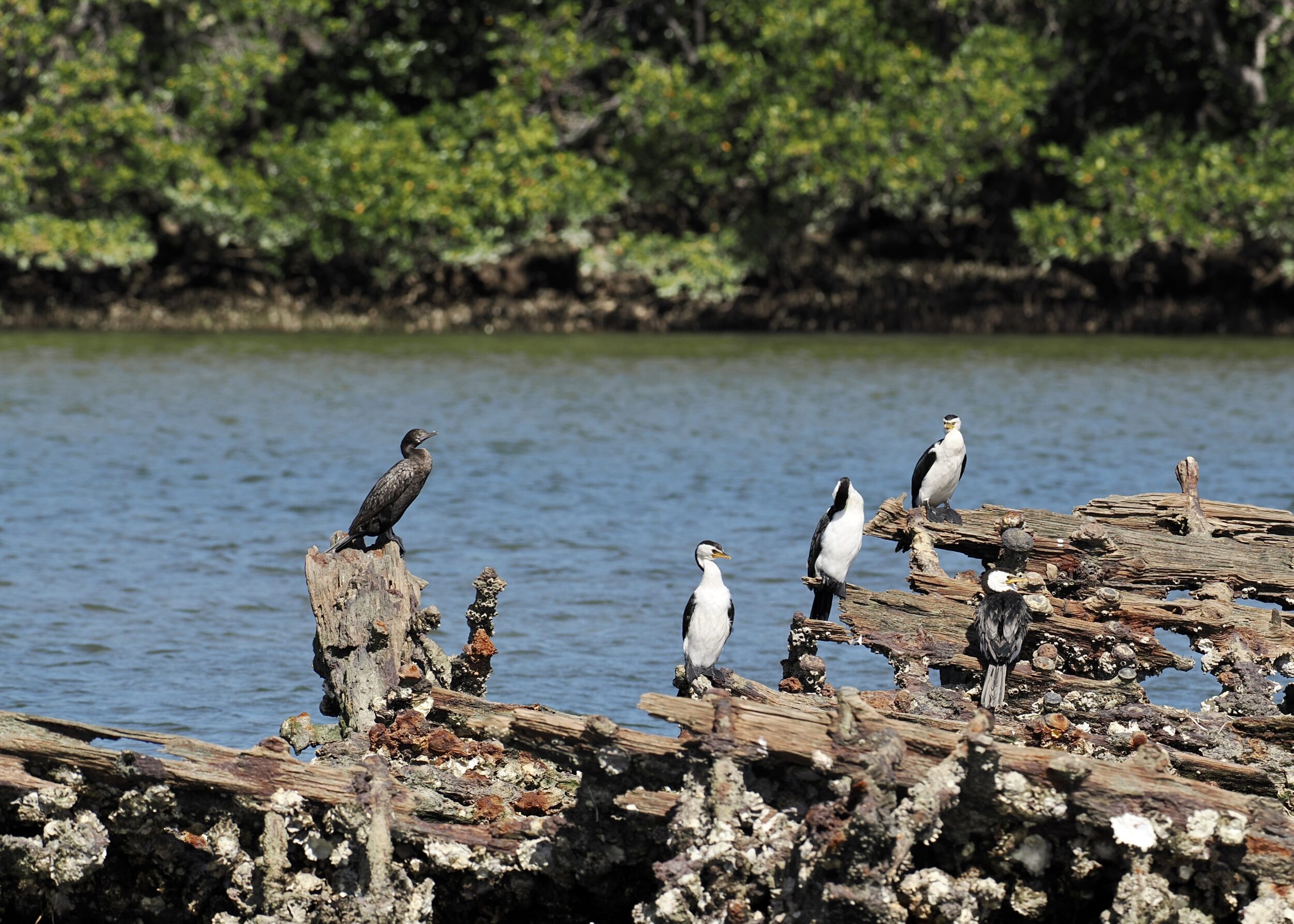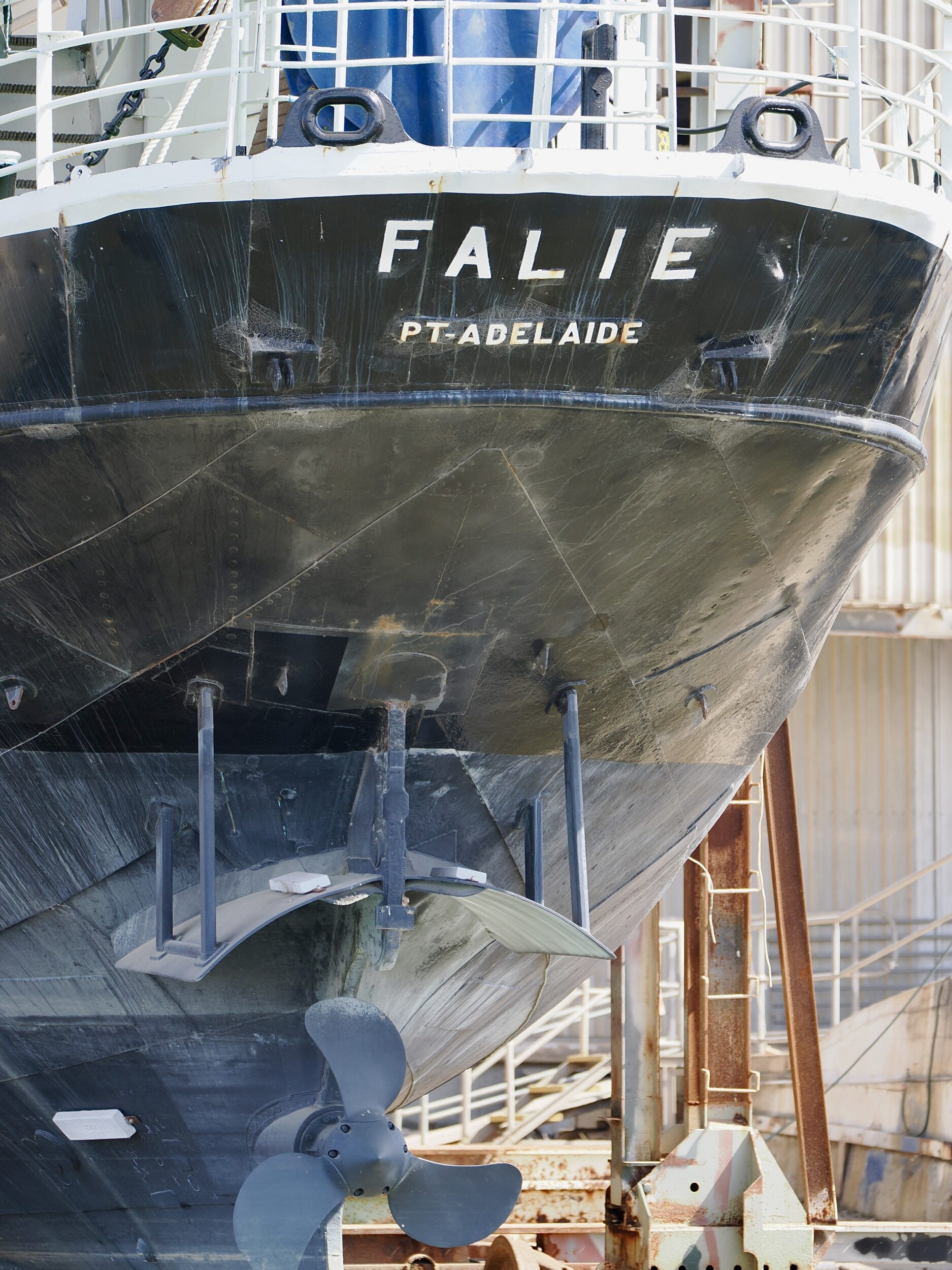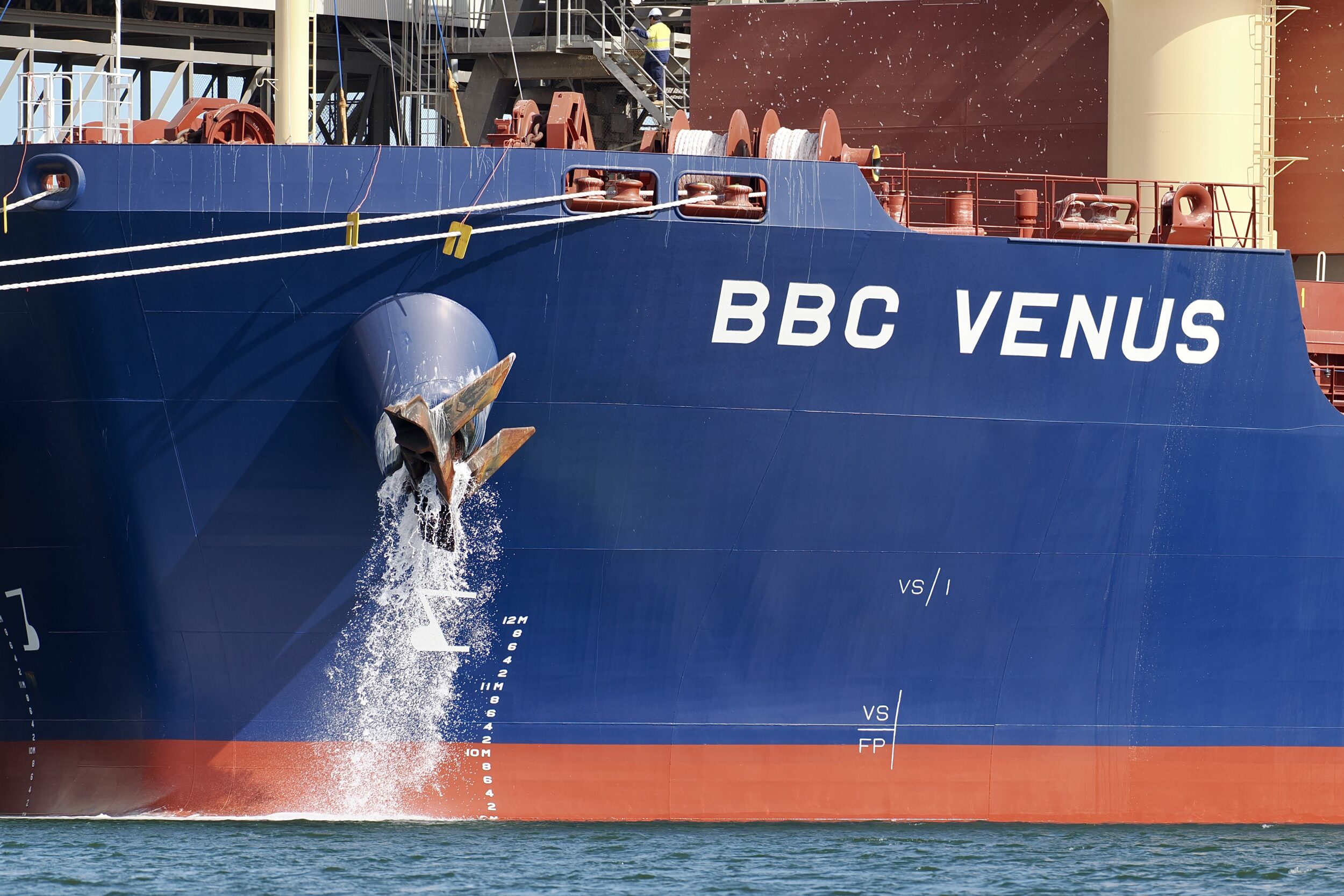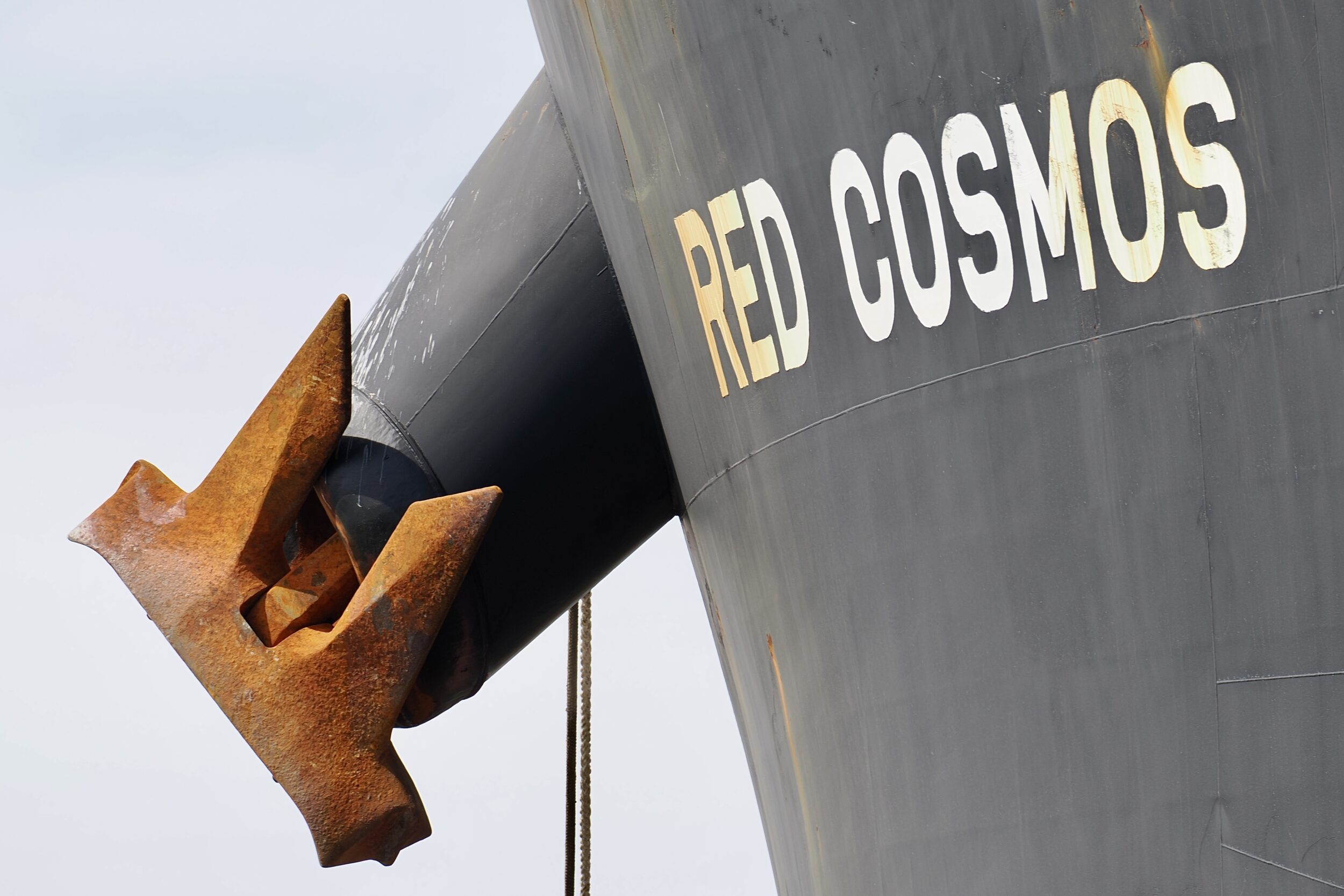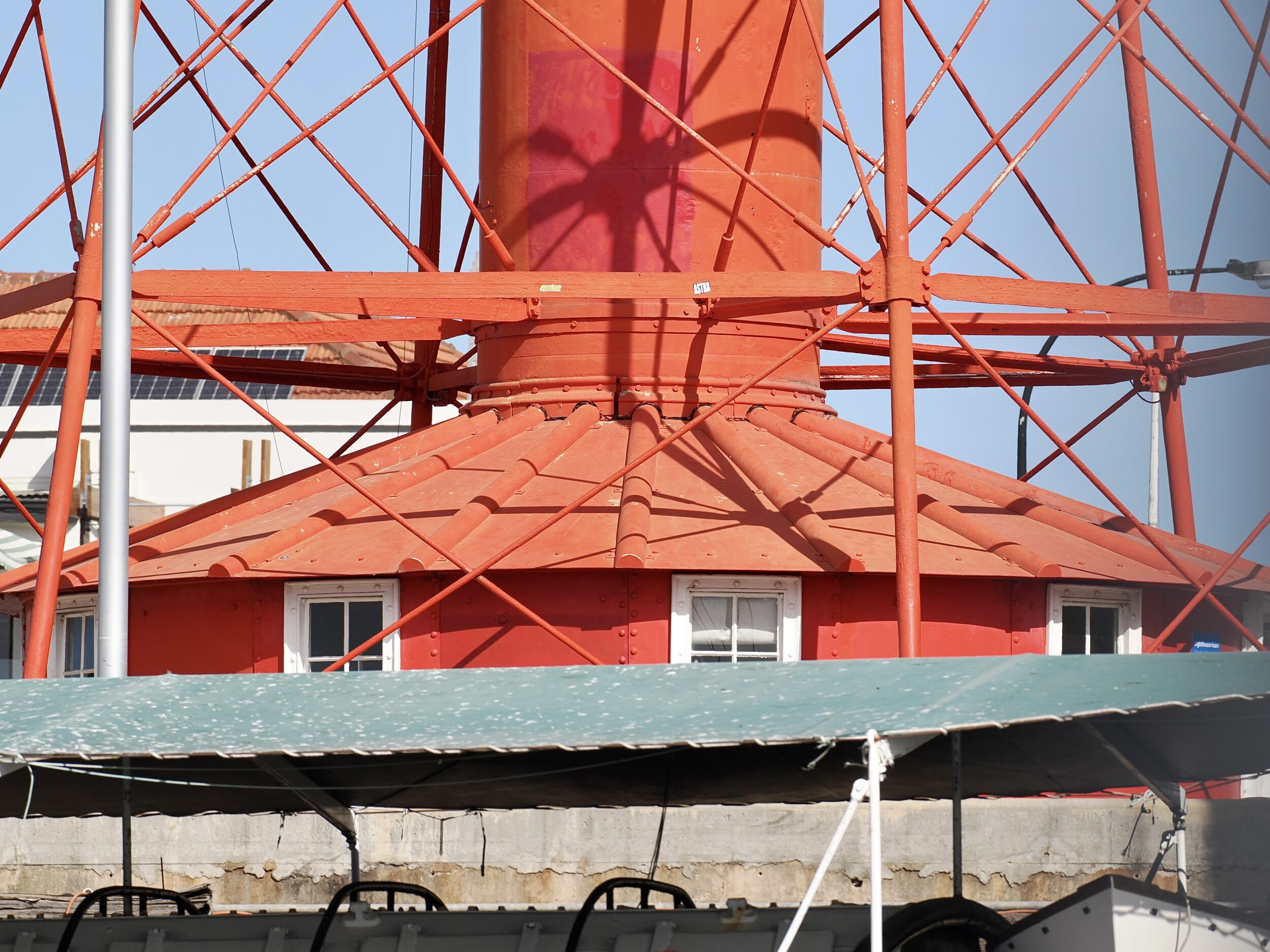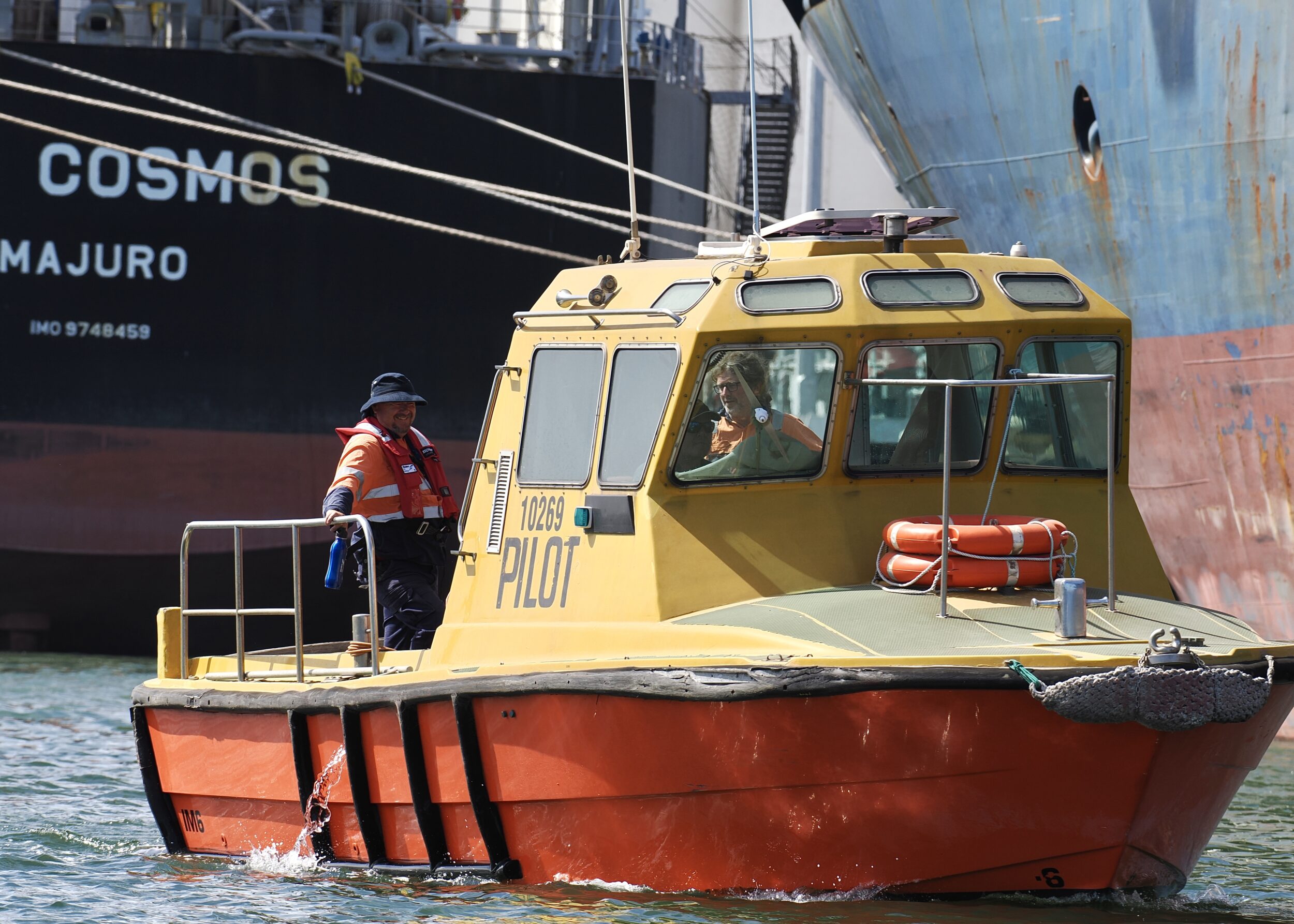The southern edge of the Adelaide International Bird Sanctuary National Park is surprisingly close to Port Adelaide’s actual port, power station and industrial zone.…
Comments closedTag: Port Adelaide
You are looking at part of the largest of five such graveyards in Port Adelaide.
All will be explained in a few episodes’ time.
Suffice for now that these graveyards’ occupants are not human corpses or skeletal remains, and that various living beings – plants, birds, fish, reptiles and mammals – thrive in these graveyards.
Comments closed
The Falie is a notable, historic vessel – the last of its South Australian kind, and one of just two “survivors” among the many ketches that used to be Australia’s “coastal traders”.
It is more than a century older than the BBC Venus and Red Cosmos.
Almost certainly, neither of this series’ two previously-featured vessels has ever entered its registered, purely-notional, “false-flag” port.
However, you can believe what you read on the stern of today’s much smaller hero – Port Adelaide really was/is the Falie’s actual home port.
In 2024, however, this lovingly restored “icon” of South Australia’s maritime history has been out of service for nearly two decades, and there is no guarantee that it will ever sail again.
Comments closed
Britain’s now severely-underfunded national broadcaster may well be looking – urgently – for “new means of generating revenue”.
The BBC Venus is not one of them.
Very obviously the youngest ship berthed at Port Adelaide on 07 March 2024, this bulk carrier was launched in 2023.
Under its current “flag of convenience”, the vessel’s ostensible “home” is Liberia.
Comments closed
There is nothing Socialist – let alone Communist – about this Red Cosmos.
The bulk carrier of that name was launched in 2015, and has since made more than a few trips to Port Adelaide – all with capitalist intent.
Also a fiction: the vessel’s purported home port.
Majuro is purely a “flag of convenience”; such “false flags” are deployed by most ship-owners.
They are a key part of their efforts to minimise expenditure, to maximise their profits and to evade any legal “liability” in relation to “accidents”, and to mistreatment of employees.
Comments closed
A particularly vivid childhood memory: visiting one of the woolstores in Port Adelaide, to see some of our family farm’s wool on display, prior to its auction.
At the time – circa 1960 – Port Adelaide’s woolstores were the world’s largest; the one I walked into was by far the biggest and most impressive man-made space I had ever seen.
Port Adelaide’s lighthouse – pictured above and below – pre-dated any of those woolstores.
Like them, this much more modest structure long ago lost its original raison d’être.
In recent decades, however, the lighthouse has been rather better looked after than have most of the woolstores.
Comments closed
This post answers the question posed in the immediately-preceding one.
The relevant tidal creek is Adelaide’s Port River; its “official name” (which I have never heard anybody actually use, in conversation) is “Port Adelaide River”.
Dredged and much-modified/abused over the last 185 years, this tidal creek is the heart of Port Adelaide – South Australia’s primary seaport.
The Port River is the western branch of the largest estuary on the eastern side of Gulf St Vincent.
Just 14 kilometres southeast – and inland – is the heart of Adelaide’s CBD.
Comments closed